Best UX research AI tools
- Jotform AI Agents: Best for automating and enhancing UX research workflows
- ChatGPT: Best for user research and data analysis
- UserTesting: Best for hearing unfiltered user insights directly.
- UX Pilot: Best for designing websites and getting AI design feedback.
- Maze: Best for an all-in-one solution
- CoNote: Best for synthesis
- Microsoft Clarity: Best for reviewing user behavior on your site
Traditional user experience (UX) is essential, but it can be painfully slow. A/B split tests take considerable time, and sifting through spreadsheets or heatmaps to find actionable insights is overwhelming. In 2025 and beyond, it’s also unnecessary. Enter AI for UX research.
The AI capabilities within UX research tools automate the most time-consuming aspects of the process, including recruitment and survey generation, interviews, usability testing, data analysis, and synthesis. Thanks to the best AI tools, instead of being overwhelmed by data, UX teams can focus on strategic decision-making, creative problem-solving, and improving user outcomes more efficiently.
But what makes a great AI tool for UX research? Let’s answer that, then look at seven of the best AI tools for UX research, each of which I tested and reviewed myself. You’ll find insights on what each tool is best for, what sets it apart, how it can be used in real-world cases, how much it costs, what G2 ratings it has, and which of its specific AI features make teamwork easier.
(And for a quick look, don’t miss the quick comparison table at the top of the article.)
What makes a great AI tool for UX research?
What makes a great AI tool for UX research will depend on your individual needs, but in my opinion, there are essential markers of a great AI tool, including
- Workflow enhancement: A good tool should enhance the quality, speed, depth, and breadth of research. A good AI tool for UX research should be unequivocally better than traditional, manual methods.
- Quantifiable, high-quality insights: Good insights can shape your UX decisions.
- Ease of use: Usability with UX-friendly features and an intuitive UX is a must. (Wouldn’t it be ironic if a UX product didn’t offer this?)
- Research-specific capabilities: Features like video tagging, sentiment analysis, or journey mapping.
How this list was tested and selected
When putting this list together, I looked for tools that had all the previously mentioned features. It was especially important that these tools brought strong insights and automation to the UX decision-making process and workflow.
Basically, I want you to be tempted by every single tool, to the point where choosing the one to start with was a struggle, because they’re all that good. This is also why I included a comparison table below — I want you to see the key features outlined in a clear and digestible manner, so you can begin choosing the right tool for you.
All of these tools have
- Free versions or demos are available, allowing you to test a product before signing up for its full capabilities.
- Features and unique qualities that enhance the UX research and associated workflows.
- Speedy analysis for those who want to move quickly.
- Remarkable UX AI features outside of standard AI, like generative AI.
Tools were excluded if AI features were vague or disconnected from UX workflows
Best AI tools for UX research: A quick comparison
| Tool Name | Best for | Unique feature | Pricing |
|---|---|---|---|
| Jotform AI Agents | Automating and enhancing UX research workflows | No-code solutions that enable anyone to add a Jotform agent to a site or product in minutes | Free version availableTiers start from $34/month |
| ChatGPT | AI-generated content, user research, and data analysis | Extremely versatile | Free version availableTiers start from $20/month |
| UserTesting | Hearing unfiltered user insights directly | Purpose-built UX features like tagging, heatmaps, and task success rates | Free version availableCustom tiers |
| UX Pilot | Designing websites and getting AI design feedback | Strong AI-generated iterative design | Free version availableTiers start from $12/month |
| Maze | All-in-one UX research solution | Use the tool for prototypes, surveys, card sorting, tree testing, heatmaps, and session replay | Free version availableCustom tiers |
| CoNote | Audio and video synthesis | Highlights key moments with a transcript so you can be fully present | Free version availableTiers start from $19/month |
| Microsoft Clarity | Reviewing user behavior on your site | Group recordings and heatmap summarisation | Forever free |
Pro Tip
A tool’s “unique features” should include more than AI — for example, “AI-driven affinity mapping,” “automated interview summaries,” “sentiment clustering by persona,” and so forth.
The 7 best AI tools for UX research in 2025
Let’s get into the seven best tried and tested AI tools for UX research.
1. Jotform AI Agents: Best for automating and enhancing UX research workflows
Pros:
- Unbeatably fast and easy to use. I’ve created Jotform AI agents and added them to my website within five minutes — that’s no exaggeration.
- No-code solutions enabling anyone to add a Jotform agent to a site or product in minutes.
- Over 7,000 AI agent templates in total, and 706 templates are feedback AI agents.
- Build agents on every channel, including WhatsApp, Facebook, your website, phone agents, and more.
Cons:
- Jotform’s AI agents excel at gathering data and making the process for your team and your customer easy. This tool is a great fit for the data collection phase of UX research, but it’s not designed for more advanced tasks, such as tracking user behavior or synthesizing interviews, something other tools listed in this article can do.
Jotform’s AI Agent streamlines and accelerates UX research workflows by automating form and survey creation.
The speed at which you can create a Jotform AI agent is unbeatable. To give you an idea of how fast you can set up an agent, I’ll walk you through the process..
First, visit Create AI Agent. You’ll see a screen that looks like the following screenshot. All you need to do is briefly describe what you want to create to the AI agent.
If you want, you can use my prompt: “Create a client feedback agent to gather insights about [your research focus]. The agent should be adaptable and able to engage with clients in a friendly way to gather data.”
Within a minute, you’ll get the foundations of your AI agent set up. It’ll look like what you see below. My agent is called Lena, and Jotform’s automated system has given her the role of client feedback specialist. This name and role actually work as they are, but I can edit everything, including the name, role, and welcome messages.
As you can see in the screenshot, there are tabs for TRAIN and PUBLISH. TRAIN is where you upload files and documentation, such as a customer service training manual, so your AI agent will speak exactly like your best hire.
PUBLISH provides the HTML code you can embed on your website in minutes.
Once published, you can easily switch your customer feedback agent between the AI and your human team.
One thing Jotform does well is provide a comprehensive catalog of articles and supporting content, so you’ll never feel at a loss with your Jotform AI agent.
Here are some top articles to get you started:
AI functionality:
- You can create an agent using generative AI and natural language processing, as I outlined already — but. it’s so efficient, I have to mention it again here.
- Jotform has over 100 integrations and automations, so it can easily integrate into existing workflows within CRMs, project management tools, and much more.
- Natural language processing lets AI agents transform static forms into dynamic experiences. Your customers can engage in natural conversations with Jotform AI agents, encouraging them to provide authentic responses which lead to valuable insights.
How Jotform AI agents support key research steps
Jotform AI agents are often used as the first phase of UX research: data collection. Once you’ve got the data, you can run it through ChatGPT for faster analysis, which we’ll explore in detail later.
Real use case:
Jotform’s AI agents have been used in a range of industries for feedback. To name a few:
- Healthcare AI agents collect customer feedback and conduct surveys.
- Nonprofits use Jotform AI agents to gather event feedback.
- Retailers use Jotform AI agents to gather feedback on their shopping experiences.
Where it shines in the UX stack vs. competitors
Plans/Pricing:
Jotform offers a generous free tier that lets you set up five AI agents. This is ample to test the AI agents and see if they work for you.
From there, you have tiers:
- Bronze: $34 per month billed annually
- Silver: $39 per month billed annually
- Gold: $99 per month billed annually
The Gold package gives you up to 100 agents, 10,000 monthly conversations, and 2 million sessions. If you need more, you can scale to the Enterprise solution with custom pricing.
G2 rating: 4.5/5
2. ChatGPT: Best for user research and data analysis
Pros:
- Excellent at summarizing both quantitative and qualitative data, such as survey responses and sentiment analysis from open-ended feedback and interview transcripts.
- Versatile and very affordable, making ChatGPT an easy investment.
Cons:
- Not a dedicated UX research tool, so it requires strong prompts and specificity about what users want from the tool.
ChatGPT isn’t a UX tool by nature, but this shouldn’t stop you from using it as part of your UX research. It is a highly versatile tool.
Think of ChatGPT as a junior assistant, ready to take on all the tasks that you wish you could push off your desk. UX specialists use it to accelerate tasks such as writing surveys, synthesizing interview transcripts, generating ideas, developing user personas, and more.
AI functionality:
- Generative AI is helpful for creating any type of content. When it comes to content writing, work in a piecemeal approach. You can have ChatGPT generate an entire survey, but then you might need to refine it question by question.
Natural language processing means ChatGPT can summarize and synthesize survey responses or interview transcripts. I provided an example of how to use the AI as a UX research tool under “Real use case” below.How ChatGPT supports key research steps
ChatGPT is a UX researcher’s copilot. It can support almost every step of the UX research process, from data collection and documentation creation to analysis and data-driven action plans.
Real use case:
You can feed ChatGPT the transcripts from your Jotform AI agent and ask for summaries or sentiment analysis. Here’s how I did it:
First, I downloaded a conversation transcript from the backend of my Jotform account.
Once you click download, your file will download as a PDF.
I wanted to analyze the conversation with the help of ChatGPT’s AI.
Here’s the prompt I used:
“I’m a UX researcher analyzing qualitative feedback. I’m going to attach a transcript of a client who gave a 3/5 rating for my product. I want you to act like a senior UX researcher and help me analyze this feedback in detail.
Please:
- Identify key themes (praise, complaints, suggestions, etc.)
- Perform sentiment and emotional tone analysis
- Link issues to common UX principles or heuristics (like Nielsen’s)
- Generate 2–3 hypotheses about the underlying user needs or frustrations
- Provide actionable UX recommendations based on the feedback
- Summarize the findings in a professional UX research report format
Are you ready for me to attach the file?”
Here’s the output:
Where it shines in the UX stack vs. competitors
ChatGPT is a copilot that is versatile enough to assist with just about any UX research task. While other AI tools have a role or have been built for specific tasks, ChatGPT is the assistant you didn’t know you needed.
Plans/Pricing:
Since ChatGPT is free, incorporating this tool into UX research seems like a no-brainer. To have ChatGPT review and edit files, as I did in the use case mentioned earlier, you’ll need to invest $20 per month.
G2 rating: 4.7/5
3. UserTesting: Best for hearing unfiltered user insights directly.
Pros:
- Hear directly from users as they narrate their experience navigating your product or website.
- Fast feedback from users, often within hours.
- Purpose-built UX features like tagging, heatmaps, and task success rates.
- Reach relevant audiences by targeting specific individuals based on their gender or demographics, for example. Screener questions enable the filtering out of irrelevant audiences.
Cons:
- Limited to timely testing and not suitable for discovery or survey-heavy research
- Geared toward enterprise users and expensive. When I worked as a user tester, I tested for huge businesses like Booking.com and Airbnb
UserTesting is a dedicated UX research platform that connects businesses with their users who test products and websites in real time while you watch. Users are expected to complete a task, such as making a booking, booking a flight, or editing account settings within a product. As users complete the task, they’re expected to narrate their experience.
UX researchers use UserTesting to validate assumptions, test flows, and gather feedback at all stages.
I used to be a UserTester, and I liked the tool. It screens people out of many requests, so you’re really accessing your desired audience when you use UserTesting.
AI functionality:
- AI-powered insights process video, transcripts, and behavioral data at scale, highlighting recurring patterns and friction points that save hours in manual analysis.
- AI survey themes summarize the most relevant themes from open-ended survey questions.
- Sentiment analysis detects moments of negative and positive emotion. Within transcripts, you can see green text, indicating a positive emotion, and red for negative.
Here’s what it looks like:
How UserTesting supports key research steps:
UserTesting is pretty versatile in the UX research stages. Use it to
- Test your product or prototype
- Synthesize videos
- Journey mapping to identify areas where friction occurs
Real use case:
With UserTesting, you can run prototype tests to see how your users respond and react to elements of your prototype while they’re completing a task. The task can be anything you set.
Costa Coffee used UserTesting to evaluate a new app targeting a younger generation. Through UserTesting, they achieved a 12 percent increase in app visits.Where it shines in the UX stack vs. competitors
UserTesting offers real-time, observational feedback that shows how people are actively engaging with your product or website in real time. Users testing the product are expected to narrate their experience as they go, and this is where UserTesting stands out from recordings on tools like Microsoft Clarity (more on that later).
Plans/Pricing:
UserTesting doesn’t list public pricing, likely because it varies based on individual needs. You can request a meeting with a sales rep if you’re interested in the tool.
G2 rating: 4.5/5
4. UX Pilot: Best for designing websites and getting AI design feedback.
Pros:
- Very affordable for what it can do, with cost starting at $12 per month.
- Super easy, intuitive design, so you can create your first design in minutes and/or have feedback on a design in minutes.
- Brilliant iterative AI for replicating a design with desired adjustments instead of producing something entirely different.
Cons:
- Likely inability to reach perfection with the design generated, but that’s a lot to ask.
- A credit system, giving you 500 credits on the standard package (for context, a wireframe uses six credits, and the more you iterate, the more credits you spend — though over time, I think you’d improve your prompt to get a better output and save on credits.
I’m a huge fan of UX Pilot. It’s easy to use, very affordable (you can even try it for free), and amazingly efficient.
I tried this AI tool for UX research and AI design feedback once; then I immediately signed up for a monthly subscription. For me, this isn’t a tool I need day in and day out, but I love having it available to subscribe to every now and then.
I can see professional designers wouldn’t need this, as it would take the fun out of designing; however, if you’re on a budget, struggling to put your ideas into words, and/or have a junior designer who needs a strong brief, this is the tool for you.
AI functionality:
- The AI Wireframer lets you create a detailed wireframe from a text prompt using natural language. To get the most out of this, be detailed. Include colors and as many directives as you can to help the process be as seamless as possible.
- AI design review uses natural language to provide feedback on a design you’ve just created. You can use a design you’ve created off the platform, or one you created with UX pilot.
AI iterations of a design are quite advanced. I have spent time generating images on ChatGPT to become quickly infuriated at how it cannot seem to see, iterate, or process the design it just completed.How UX Pilot supports key research steps
UX Pilot helps with design, which can be informed by user feedback. Once you know what people want, you can create a design, or you can use the tool to get feedback on a design you’ve already created. Assuming you don’t have the budget to ask a focus group, or you’re a startup working on a brand new concept, you can start the research using AI.
Real use case:
In terms of UX research, the most relevant tool is the AI feedback. You can create a design, upload it to the Review, and the AI gives you ideas on how you can improve it. You can use it to iterate your design until you’re happy.
Here’s a screenshot of feedback from the AI on a design I did:
Aside from the feedback AI, you can also create a design from a prompt.
I’ve used it to design wireframes for client sites, but here’s a mock website I created to demonstrate how it works.
Here’s the prompt I used:
“Design a modern, responsive homepage for an e-commerce store that sells baking goods and baking novelty items. The brand has a warm, cheerful tone with a clean, minimalist aesthetic. Use bright and neutral colors (like soft beige, white, pastel yellows, and light pinks).
The layout should include:
- A welcoming hero section with a lifestyle image and tagline like “Whisk Up Some Joy!”
- Featured product carousel (showcasing cute baking tools, measuring spoons, silicone molds, etc.)
- A “Shop by Category” section (e.g., baking tools, ingredients, gift sets, kids baking)
- Customer testimonials
- A newsletter signup with the offer to et 10% off your first batch
- Instagram feed or community showcase
- Sticky nav bar with logo, search, and cart
The design should feel playful but professional, with ample white space, clear call-to-action buttons, and a mobile-friendly layout.”
I used ChatGPT to help with the prompt.
The wireframe output looked like this:
Pretty good!
Where it shines in the UX stack vs. competitors
UX Pilot offers AI design with iterative capabilities and detailed feedback.
Plans/Pricing:
You can try the tool for free. If you do, my advice is to make the prompt super detailed so you can really push the capabilities of the tool.
If you like it, you have options for packages:
- Standard, which is $12 per month
- Pro, which is $22 per month
G2 rating: 4/5
Note: UX Pilot AI only has only one review on G2, and it’s rated four stars. This seems grossly unfair for such an amazing tool. To gain a clear understanding of the tool and how to use it, I recommend watching YouTube videos like this one.
5. Maze: Best for an all-in-one solution
Pros:
- Maze works quite well for prototypes, surveys, card sorting, tree testing, heatmaps, and session replay.
- Easy-to-use interface — the first time I used Maze, I tested the surveys, and I was rolling with it in minutes.
- Integrations with key tools like Figma, Adobe XD, Sketch, and more.
Cons:
- Technical limitations and mobile responsive testing are common flags from users who reviewed on G2.
Maze is a comprehensive UX research platform used by product teams, UX researchers, and solo designers to run remote unmoderated and moderated studies. You can test prototypes, create surveys, gather the data, and analyze user behavior all in one place.
AI functionality:
- Suggested phrasing is a feature that gives AI-generated suggestions for questions.
- Dynamic follow‑up generates new questions based on previous answers, so you can ask more probing questions. For example, if someone writes an answer saying, “Your app runs slow,” dynamic follow-ups will ask,“Are there specific moments where the app is slow?”
How Maze supports key research steps
Maze offers high-level support and functionality when it comes to research, survey design, and user behavior analysis.
Real use case:
Maze can be used to run interviews and prototype assessments. Maze’s AI automatically refines survey questions, triggers follow-ups, and produces summaries that reduce manual work significantly.
Where it shines in the UX stack vs. competitors
Maze is an all-in-one solution. With everything in one place, avoid the hassle of multiple third-party integrations or unexpected add-ons.
Plans/Pricing:
Maze’s pricing is bespoke. You can start free with one project, but once you exhaust the free version, you need to talk to the team.
G2 rating: 4/5
6. CoNote: Best for synthesis
Pros:
- Integrates directly from Zoom, Google Drive, or your PC for easy import, so you can quickly access files without having to download everything to your PC.
- More enjoyable meetings because CoNote will take meeting recordings and spot the similarities (eg, similar questions asked) and note the patterns in interview responses(and you don’t need to take notes or make timestamps when you use CoNote, so you can be more present.
- Key notes and moments within meetings are highlighted, so when you’re reviewing the transcript, you can easily see the important insights.
Cons:
- On G2, some people complain about the slow rollout of features.
CoNote is an AI platform for qualitative UX researchers and product teams. It streamlines the tedious work of transcribing, analyzing, tagging, and sharing insights from interviews, usability tests, and customer conversations.
AI functionality:
- AI automation transcribes audio/video. The output is a full transcription that you can scroll and search with key moments highlighted, so you can go straight to the most important sections.
- Identifies and tags themes against defined research goals, making it time-efficient to access the content you most want to focus on.
- Performs sentiment analysis across all inputs.
How CoNote supports key research steps
CoNote offers video interview synthesis, so researchers can avoid poring through hours of content and instead extract the most valuable insights in an instant.
Real use case:
A UX researcher who has conducted multiple interviews can easily upload audio and video files into CoNote for synthesis.
Within minutes, the tool provides accurate transcripts, flags key themes across interviews, assigns sentiment tags, and includes video clips of user quotes.
Where it shines in the UX stack vs. competitors
CoNote enables interviewers to be fully present in meetings and interviews because the highlighted key moments and interview synthesis are reliable.
Plans/Pricing:
Get started for free. You get five hours of transcription, unlimited projects, and video highlights, which is a generous starter tier. After that, you’ve got two options:
- Pro $19 per month
- Teams $195 per month
G2 rating: 5/5
7. Microsoft Clarity: Best for reviewing user behavior on your site
Pros:
- Completely free with no usage limits.
- Easy to set up with an intuitive AI — it takes minutes to set Clarity up and connect it to your site.
- The AI summaries save hours of time (instead of watching a recording, AI can summarize what happened and what you need to do to resolve user pain points.
Cons:
- While the AI summaries are excellent, you do need a smart marketer to identify a good recommendation from a poor one. Not everything should be implemented.
- No built-in feedback tools like surveys or polls.
Microsoft Clarity is, in my opinion, an underrated tool in the world of UX research. The reason I’ve got Microsoft Clarity on this list is because when it comes to design decisions about UX on your site, all that matters is your site and your users.
With heat and scroll maps, Microsoft Clarity uncovers how people engage with your site, so you can make UX decisions about the most important people: your audience.
The dashboard provides a user-friendly overview of what’s happening on site. Here’s what the last three days of data look like for one of my clients:
AI functionality:
- Automated insights detect UX friction markers like rage clicks, dead clicks, and script errors. This is what you can see in the screenshot above.
- Copilot is Clarity’s best AI function. You can ask the AI questions using natural language like “show scroll depth last week,” and the AI will present the information to you so you don’t have to dig around and analyze reports.
- Group recordings and heatmap summarisation will summarize up to 10 session recordings at once, highlighting key moments along with actionable takeaways and suggestions for improvement. This saves so much time. Watching recordings can be especially dull, so having the AI deliver the patterns is a great use for AI.
Here’s what a video summary looks like:
How Microsoft Clarity supports key research steps
This software is especially great for journey mapping and design analysis.
Real use case:
I recently used Microsoft Clarity to inform UX decisions about modules on a service page for my client. At the bottom of a service page, we had modules linking to various pages, including blogs, case studies, and related services.
There were some design limitations on the site, so we did the best with what we had. It was good enough, but our client flagged the design as not the best work on the site. I agreed.
So why didn’t we just change it?
The client had a limited budget, and although the design was not the prettiest, the links were highly functional for SEO purposes. To determine whether the design changes were worth investing in, we assessed the impact on the audience.
An analysis of scroll depth and clicks revealed that only 7.52 percent of users scrolled to the point on the page where the modules were located. No one was really seeing it.
This data helped us decide not to invest in the design because it was more of a vanity project, as opposed to something that would increase click-through rates and sales.
Where it shines in the UX stack vs. competitors
It has to be the price. Other tools like Hotjar also do screen recordings, scroll maps, and heatmaps really well, but you have to pay for them.
Plans/Pricing:
Microsoft Clarity is completely free, including the AI Copilot.
G2 rating: 4.5/5
UX research is evolving — AI is now part of the toolkit
AI as part of UX research can feel pretty scary. When I first shared an AI-designed wireframe from UX Pilot, the designer I was working with was initially apprehensive. However, the more you use AI, the more you can see how helpful AI UX research tools are.
AI tools reduce the repetitive and the mundane, leaving human experts to get more strategic and make better, data-driven decisions. As I said earlier, even the insights generated by AI are not good enough to follow without human judgment. Microsoft Clarity has made some not-so-great suggestions, but this doesn’t render the tool as worthless. It’s excellent; it just needs human review.
If you’re curious about the impact AI can have on your own workflow, pick one or two tools from this list and give them a real-world trial. All of them have a free version.
To start, try experimenting with a Jotform agent. With a generous free package, you’ll quickly experience all it has to offer and you’ll have an agent set up and available on your site in minutes. Plus, if you already have a knowledge base, you can train the agent to sound exactly like your most informed member of staff.
This article is for UX researchers, product teams, digital designers, and anyone who wants to streamline their user research process using AI tools that automate interviews, usability testing, feedback analysis, and journey mapping.
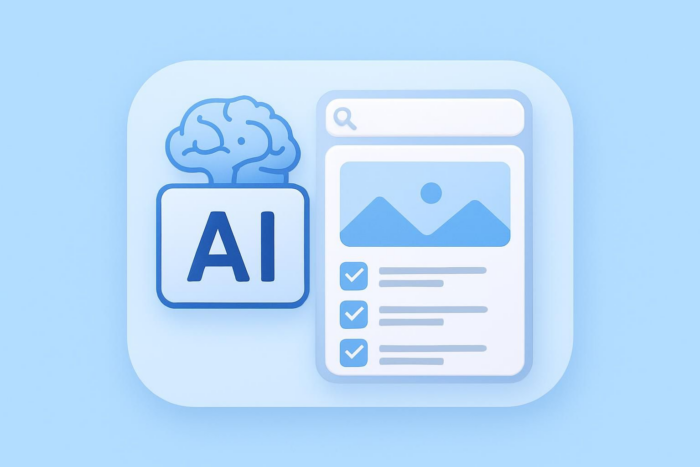
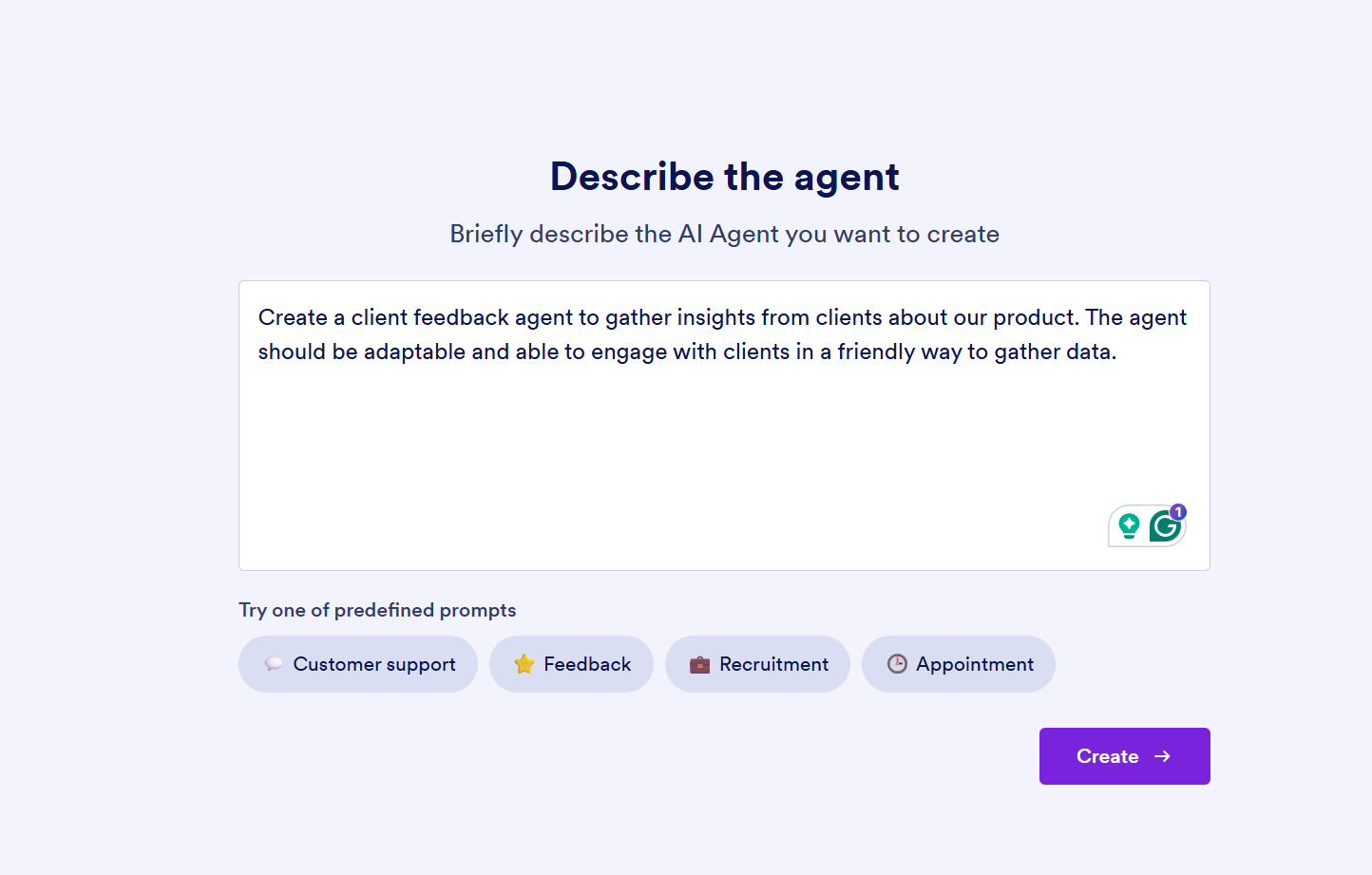
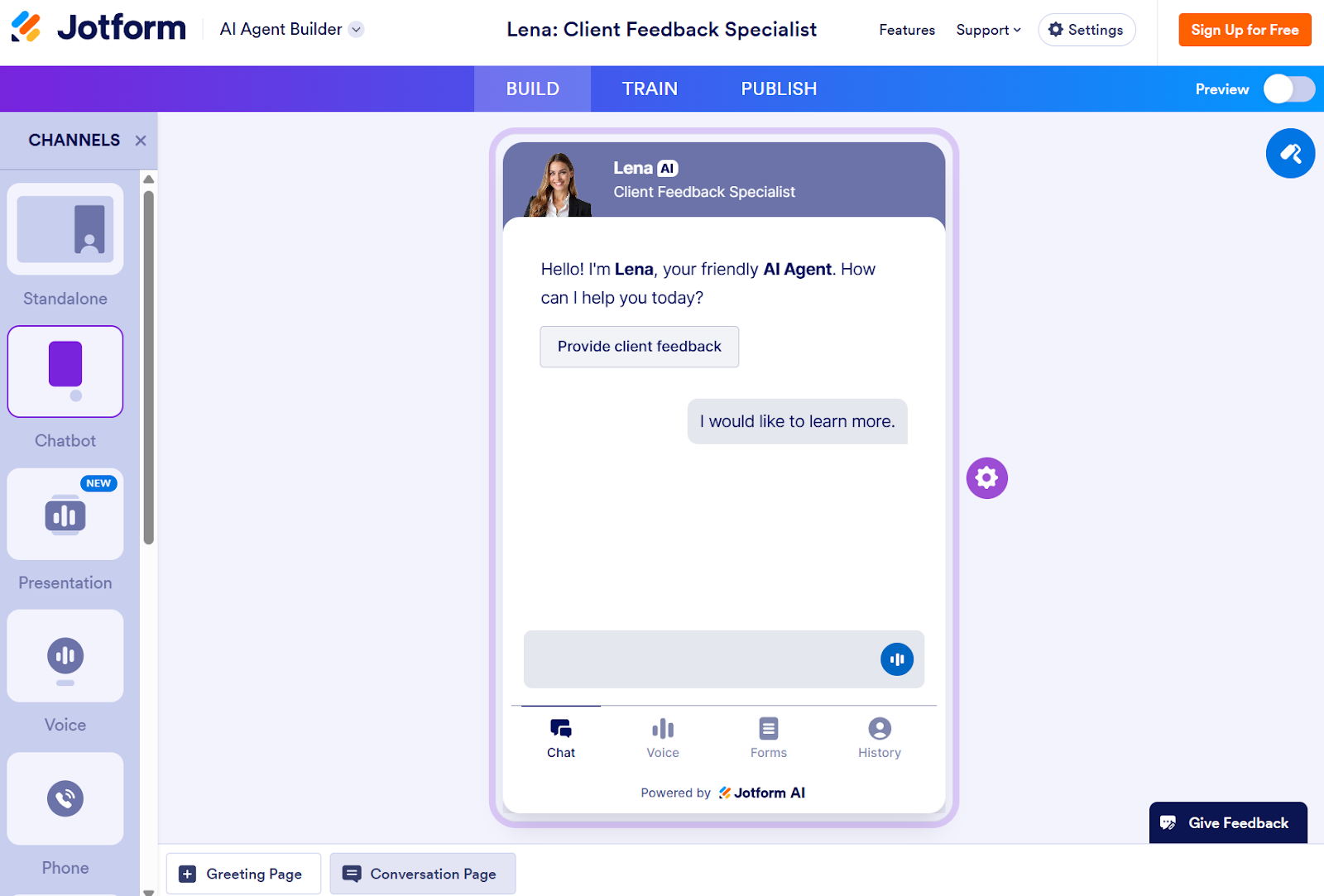
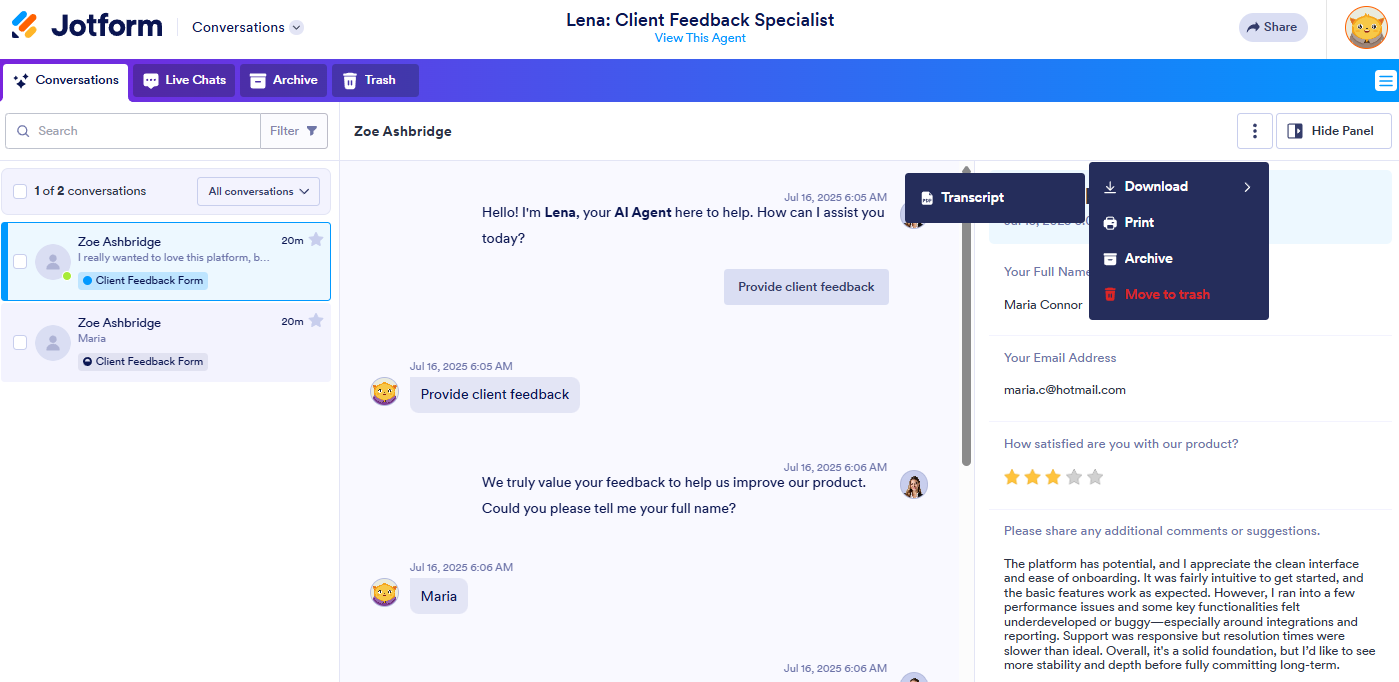

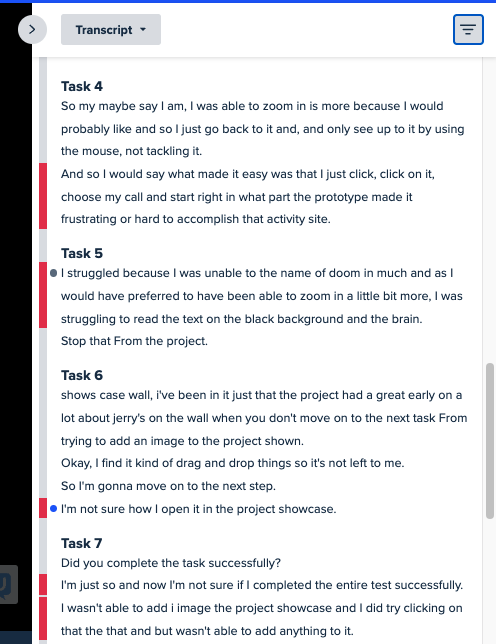
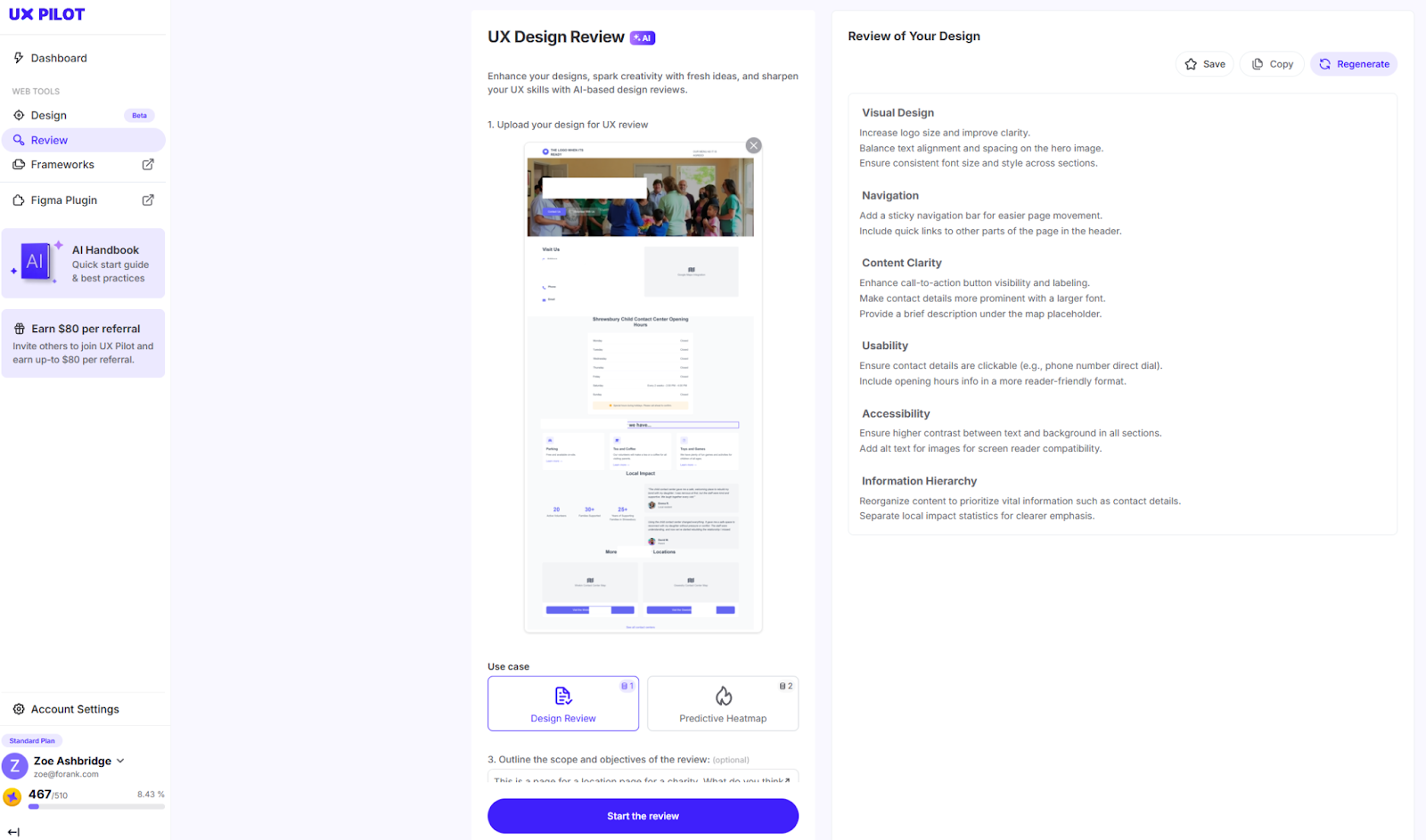
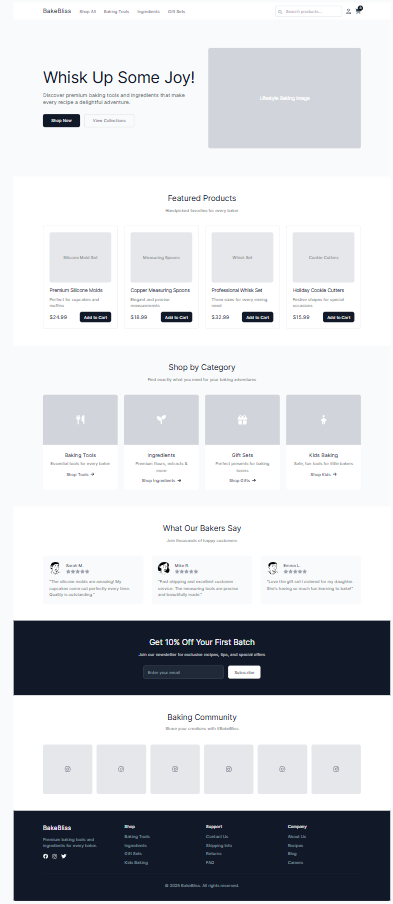
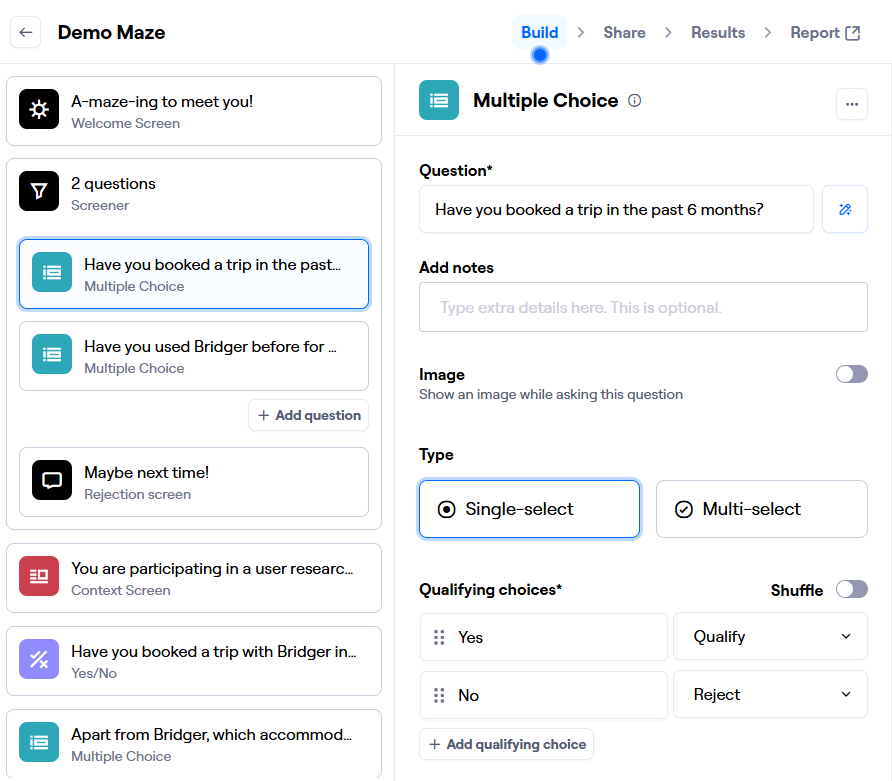
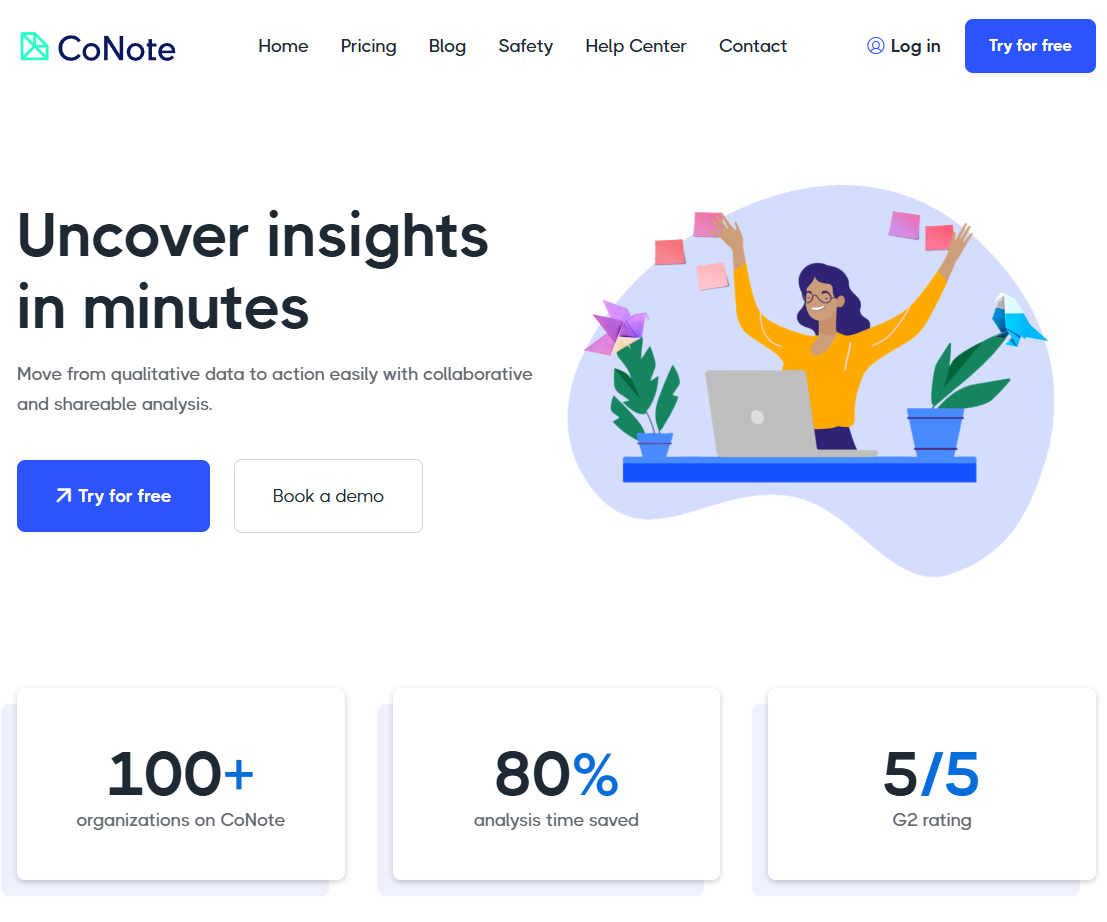
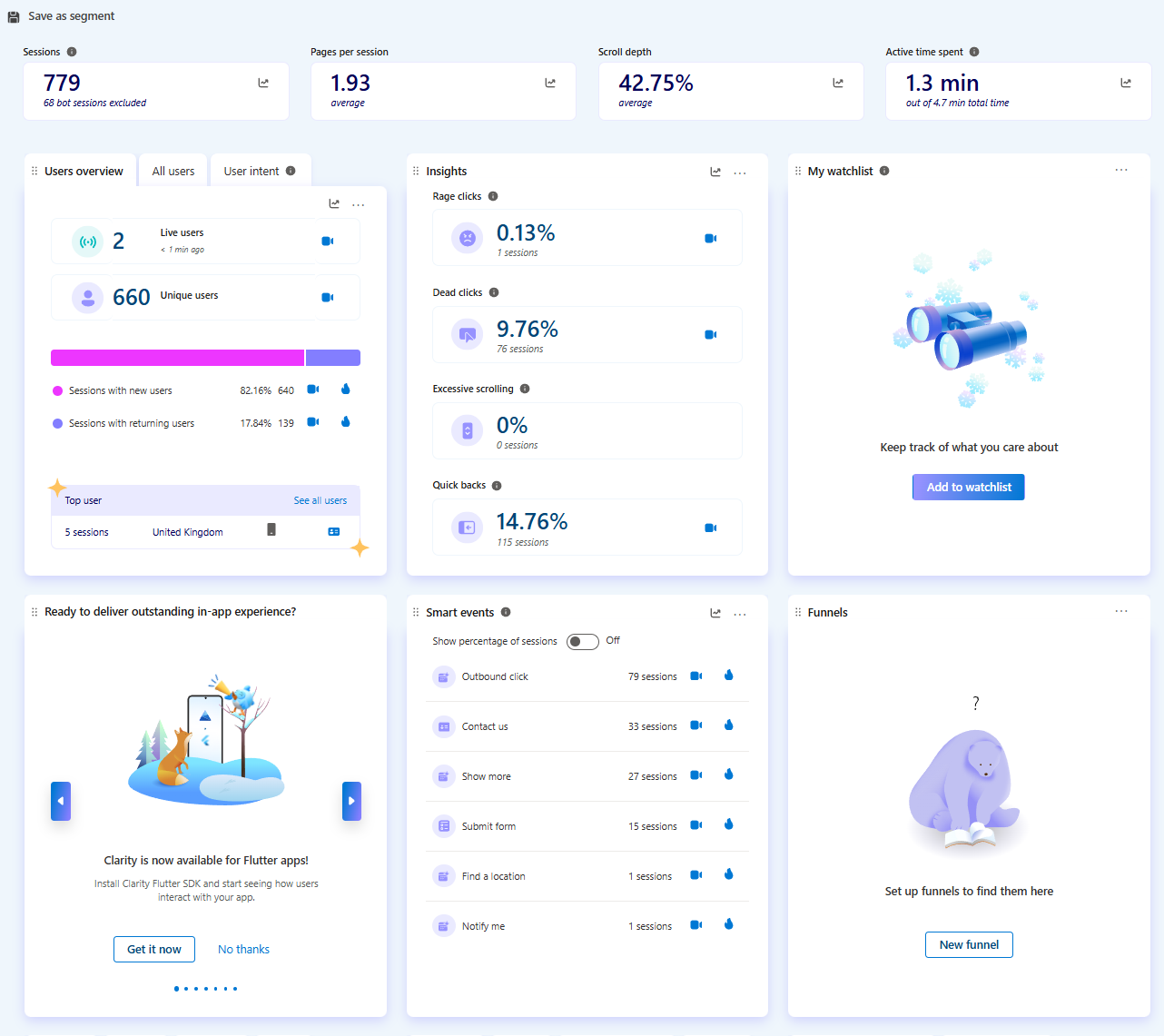
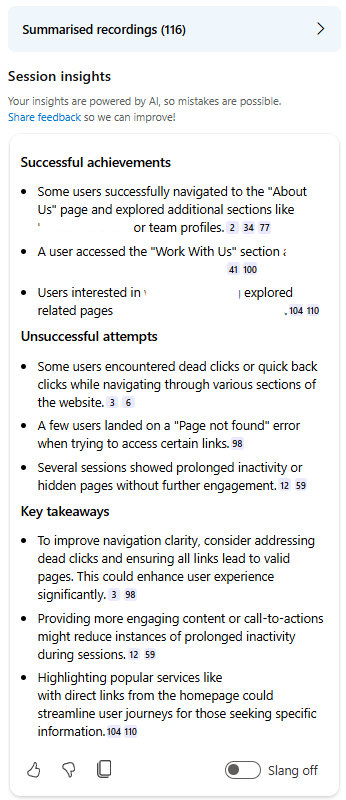






































































































Send Comment: